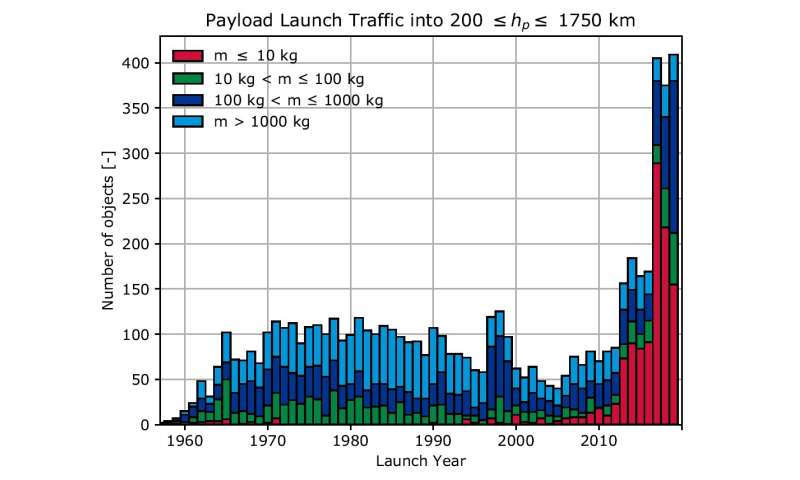Phys.org October 12, 2020
According to the ESA Annual Space Environment Report the number of debris objects, their combined mass, and the total area they take up has been steadily increasing since the beginning of the space age. This is further fueled by a large number of in-orbit break-ups of spacecraft and rocket stages. ESA is developing and providing technologies to make debris prevention measures fail-safe through its Space Safety Program. In parallel, regulators need to monitor the status of space systems as well as global adherence to debris mitigation under their jurisdiction more closely. We can reach a sustainable use of space if international guidelines and standards are followed – design rockets and spacecraft to minimize the amount of “shedding”, prevent explosions by releasing stored energy, “passivating” spacecraft once at the end of their lives, move defunct missions out the way of working satellites, and prevent in-space crashes through careful choice of orbits and by “collision avoidance maneuvers.” While not all satellites currently comply with international guidelines, more and more space actors are attempting to stick to the rules…read more.

The number of small satellites launched into near-Earth orbit has dramatically increased in the last 10 years, in part due to the rise of satellite constellations. Credit: European Space Agency